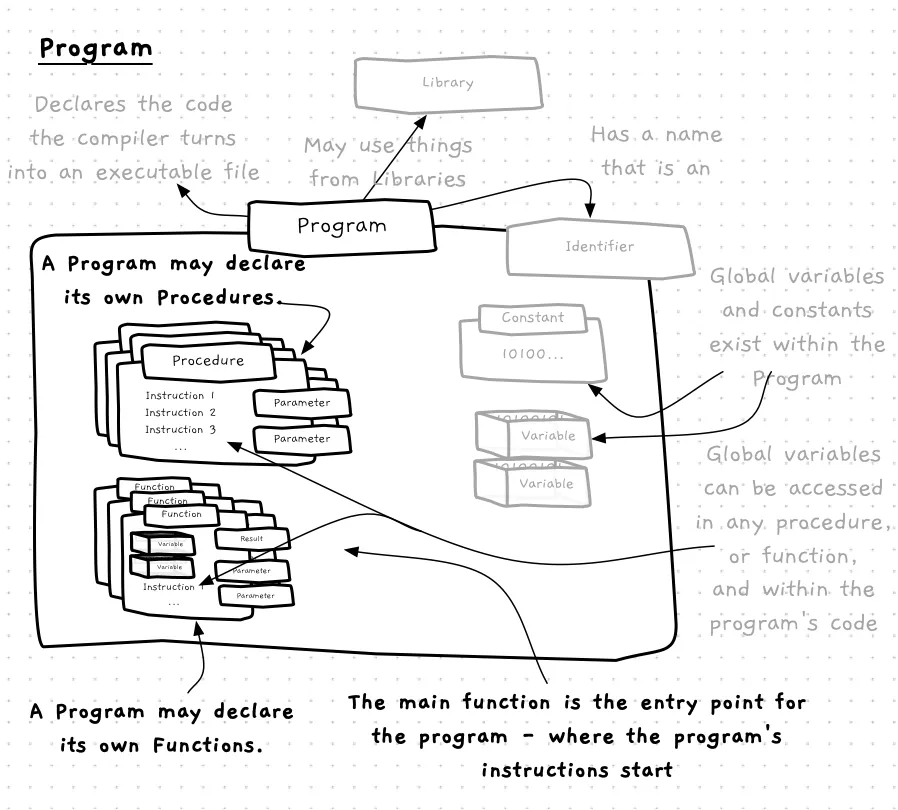Functions and Procedures
Programming languages need a way to help you manage the complexity of your code. To do this, they provide the ability to group instructions into reusable chunks. In C#, these chunks were known as methods. In C/C++, they are functions and procedures. See how this changes how to picture a program in the image below.

While C/C++ does not explicitly distinguish between functions and procedures, it is good to start with these two concepts separately in our minds.
- Procedure: a named group of instructions that will perform an action.
- Function: a named group of instructions that will calculate and return a value.
Procedures do things, whereas functions calculate things. If we think of some C# methods we have used, you can see this distinction. WriteLine, for example, is a procedure. It does something — it writes text to the terminal. IsDouble, on the other hand, is a function. It calculates something — it determines if a string can be converted to a double, and returns a boolean value to indicate if this is possible.
Functions and Procedures — when, why, and how
You can create your own functions and procedures to help you organise your code. When you identify a reusable group of instructions, you can code this as a function if it calculates a value, or a procedure if it does something. This will help to reduce duplication in the code, allowing you to create small reusable tools and processes that you can call upon when needed.
Doing this is going to make your code SO much easier to work with.
An important aspect here is the way functions and procedures let you isolate different groups of code from each other. You have been able to use WriteLine this whole time without knowing how it works internally. So you can now do this with your own code — once you have a part working, you no longer need to focus on how it works.
Similarly, when you are working on the code in one function or procedure, you can focus on it entirely. What do you need to change in its logic to add or fix the aspect you are working on? While the whole program may be many thousands of lines long, you can just focus on the few lines within the one function or procedure, and make calls to the other parts you have already created without worrying about how they work internally.
When you finish with that part, go to the next function or procedure you need to work on. You can now focus entirely upon this one function or procedure. No need to worry about the others, as you can focus on them if and when you need to. For now, that little piece of code is all you need to get working.
Before we can learn how to declare functions and procedures we need to take a quick detour back to the concept of the stack. Let’s go!